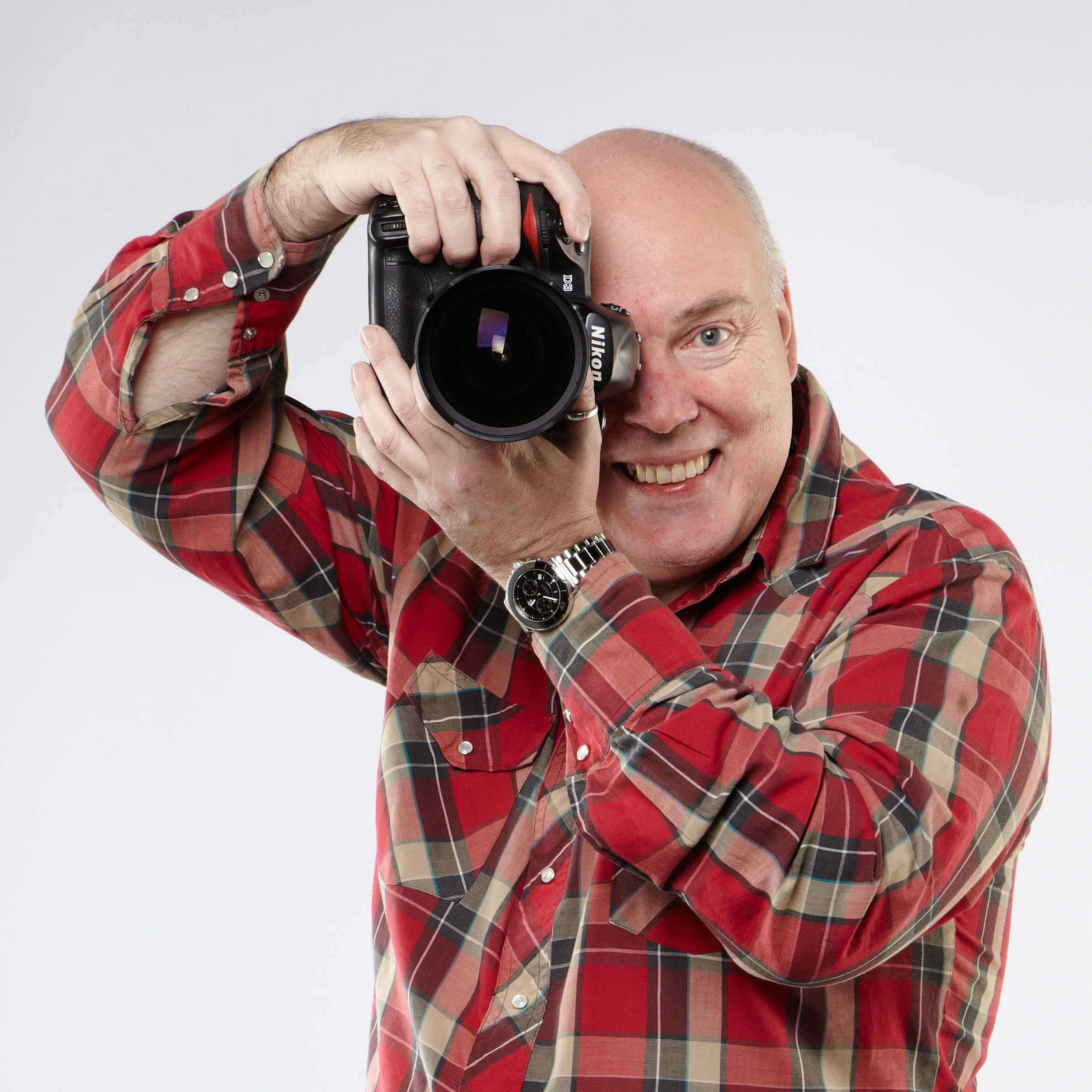Fujifilm GFX 100 vs GFX 50S: key differences between the two cameras
It's the clash of the titans! Which of these two medium format mirrorless models is the best deal for you?
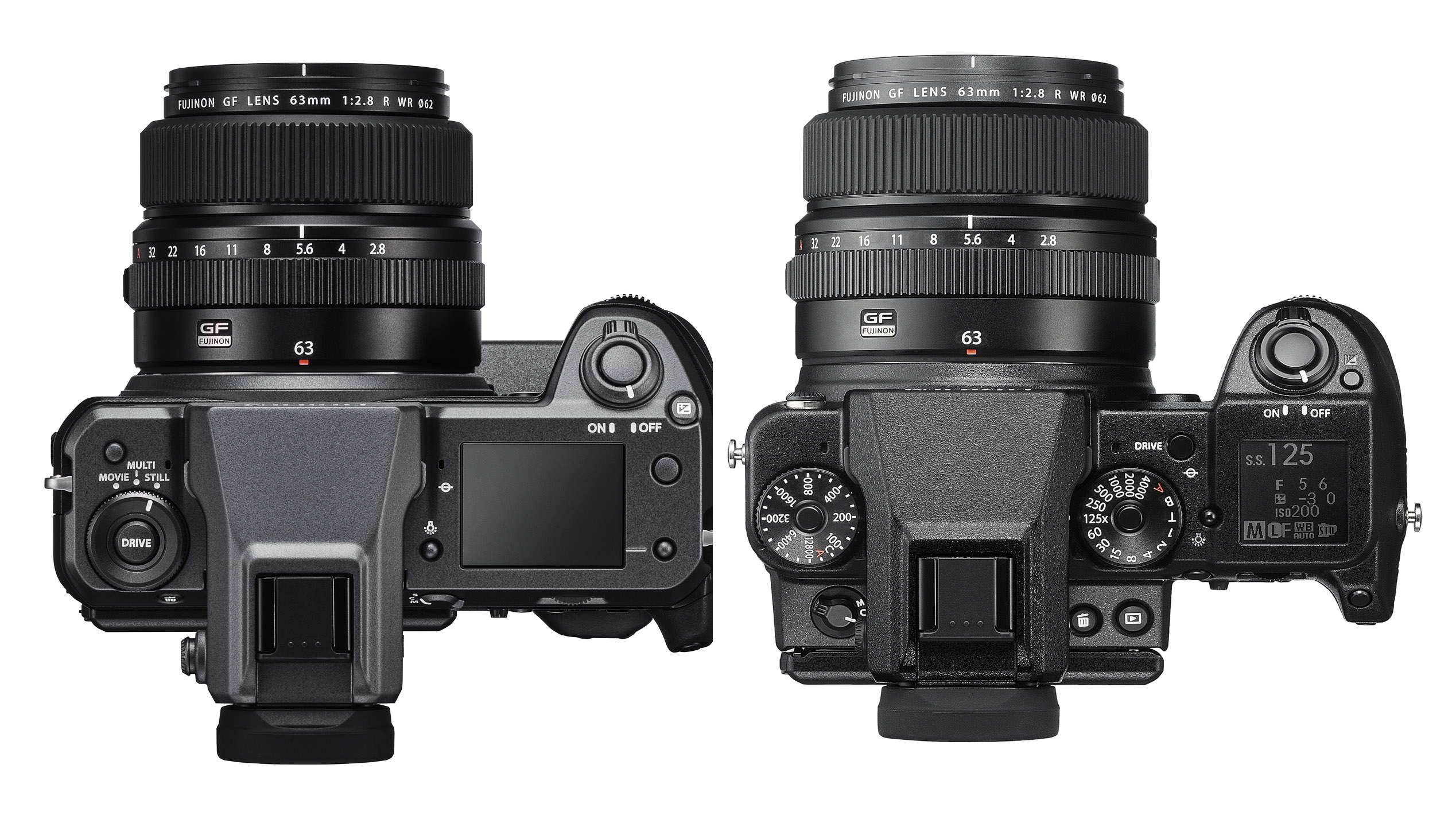
Two great medium format cameras - but which do you choose? At first glance, the more recent Fujifilm GFX 100 seems very similar to the GFX 50S that first went on sale two years earlier. But is it is not as simple as one has a 100 megapixel sensor, and the other a 50 megapixel sensor. Here are 11 crucial differences that you should know…
1) Fujifilm GFX 100 vs GFX 50s: megapixel sensor
Why you can trust Digital Camera World
GFX 100: 102 megapixel backlit illuminated Bayer sensor
GFX 50S: 51 megapixel Bayer sensor
The size of the sensors in these two medium format cameras are the same; measuring 43.8mm x 32.9mm Fujifilm call this format Super Full Frame. This format is not just 67% larger than standard full-frame sensors, but also uses a 4:3 aspect ratio (rather than the 3:2 used on full-frame).
However, there are plenty of differences too. The headline one is the doubling in the number of effective pixels that the GFX100 gives you. This means smaller photosites to achieve the 102 megapixel resolution, but this is compensated for by the introduction of a backlit illuminated sensor design which should help with lowlight performance.
Both cameras' sensors use the standard Bayer design used by most digital cameras, rather than the X-Trans technology that is used in many other Fujifilm models since 2012, including the X-T3 and X-H1.
2) Fujifilm GFX 100 vs GFX 50s: video shooting
GFX 100: 4K video
GFX 50S: 1080p video
The GFX 100 offers a number of significant firsts for medium-format photography - amongst them being the first to boast 4K video shooting. It can shoot uncropped 4K ultra high definition video at 30p too. But just as impressive is the color depth and chroma subsampling offered by this camera - as it records at 10bit 4:2:2 to an external recorder via HDMI (this is the standard that Panasonic made a big thing about when it launched the GH5 - and is what those looking for a serious videomaking camera are looking for.
The GFX 100 also can record using Fujifilm's F-Log format - allowing filmmakers similar control over dynamic range during post-production as RAW files offer photographers. There is also an HLG (Hybrid Gamma Log) setting for shooting video that can be shown on high-dynamic range (HDR) TVs.
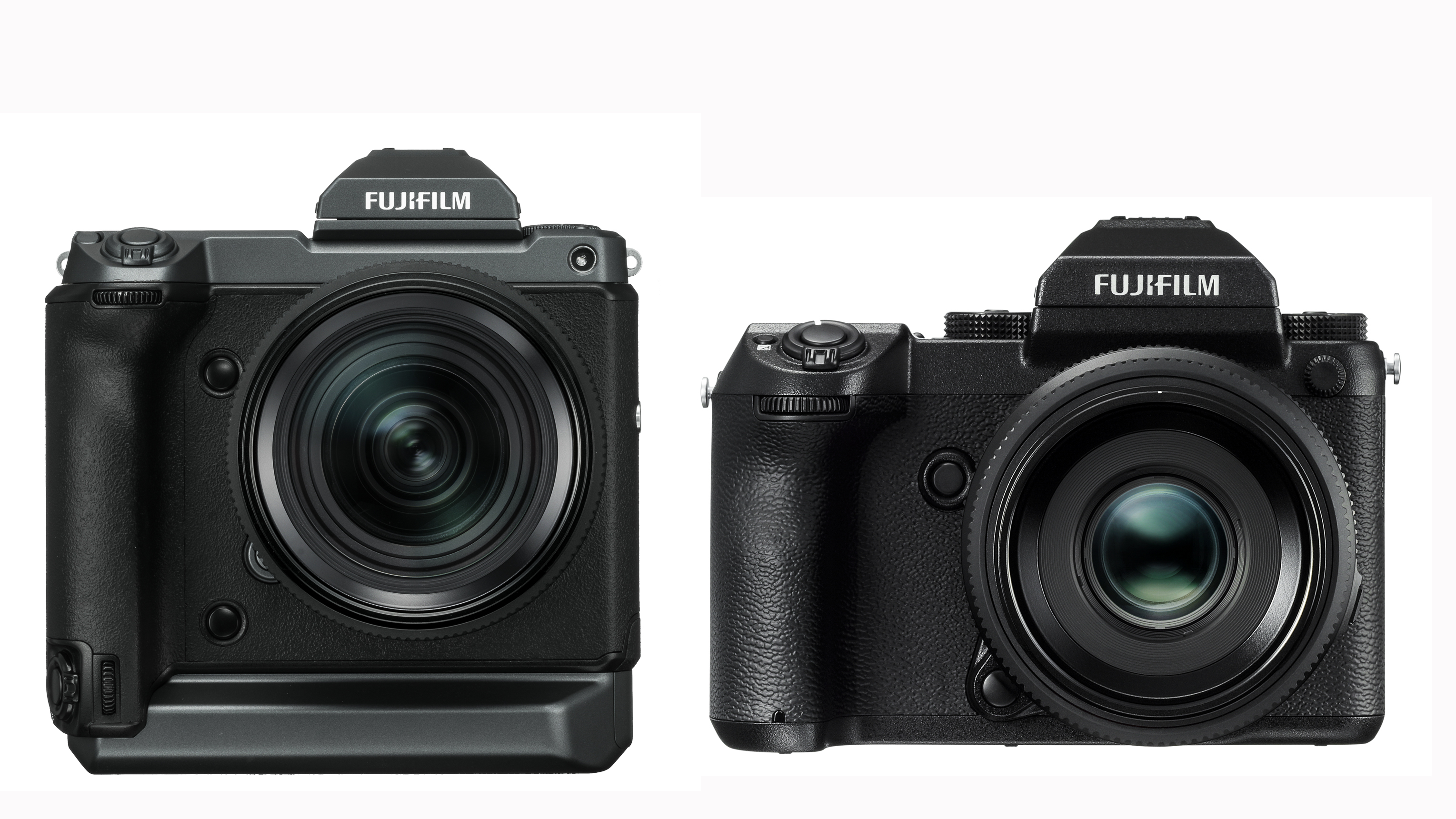
3) Fujifilm GFX 100 vs GFX 50s: image stabilization
GFX 100: 5.5-stop 5-axis in-body image stabilization
GFX 50S: none
In body image stabilization has become a game changer for many who have switched to mirrorless cameras. But with the GFX, we are seeing IBIS in a medium format model for the very first time.
The GFX 50S only provides image stabilization if you use specific lenses that offer optical stabilization... For the moment this means just the 120mm and 250mm OIS lenses in the G-mount line-up. The first OIS zoom, the GF45-100mm f/4 R LM OIS WR is in the roadmap for launch next year.
The GFX 100 however provides 5.5 stops of stabilization, across all five axes, whatever lens you use. This has the potential to rewrite the medium format photographer's rulebook... You won't be tied to using a tripod, even though this is a big bulky camera, as you will be able to get sharp pictures with significantly slower shutter speeds.
4) Fujifilm GFX 100 vs GFX 50s: autofocus system
GFX 100: Intelligent Hybrid AF (TTL contrast AF / TTL phase detection AF)
GFX 50S: TTL contrast AF
The GFX 50S' autofocus is one of its weaknesses - it is slow and ponderous in comparison to smaller format mirrorless cameras. But the new GFX offers phase detection autofocus - giving what Fujifilm are claiming will be double the AF speed. Using technology from its X-series of cameras, the sensor offer 3.76 million phase detection pixels across the whole surface, allowing you to track subjects (even moving ones) across the whole frame.
5) Fujifilm GFX 100 vs GFX 50s: burst speed & buffer
GFX 100: five frames per second
GFX 50S: three frames per second
High-speed continuous shooting is not something you expect from a medium format camera, but the GFX 100 again rewrites the rulebook allowing you to shoot at 5fps - up from a maximum of 3ps on the GFX50s.
The buffer capacity for the GFX 100 also seem to make this motordrive feature pretty usable... it can shoot up to 41 JPEG frames at 5fps before the buffer fills up (dropping to a maximum of 14 with RAW).
6) Fujifilm GFX 100 vs GFX 50s: EVF
GFX 100: 5.76 millions dots OLED
GFX 50S: 3.69 millions dots OLED
At the rear, the GFX 100 boasts a 2.36 million dot tilting 3.2-inch LCD display. But it is with the electronic viewfinder that the new camera shows its real advantage over the 50S. The GFX 100 offers an incredible 5.76 million dot EVF, via its removable EVF-TL1 tilting viewfinder.
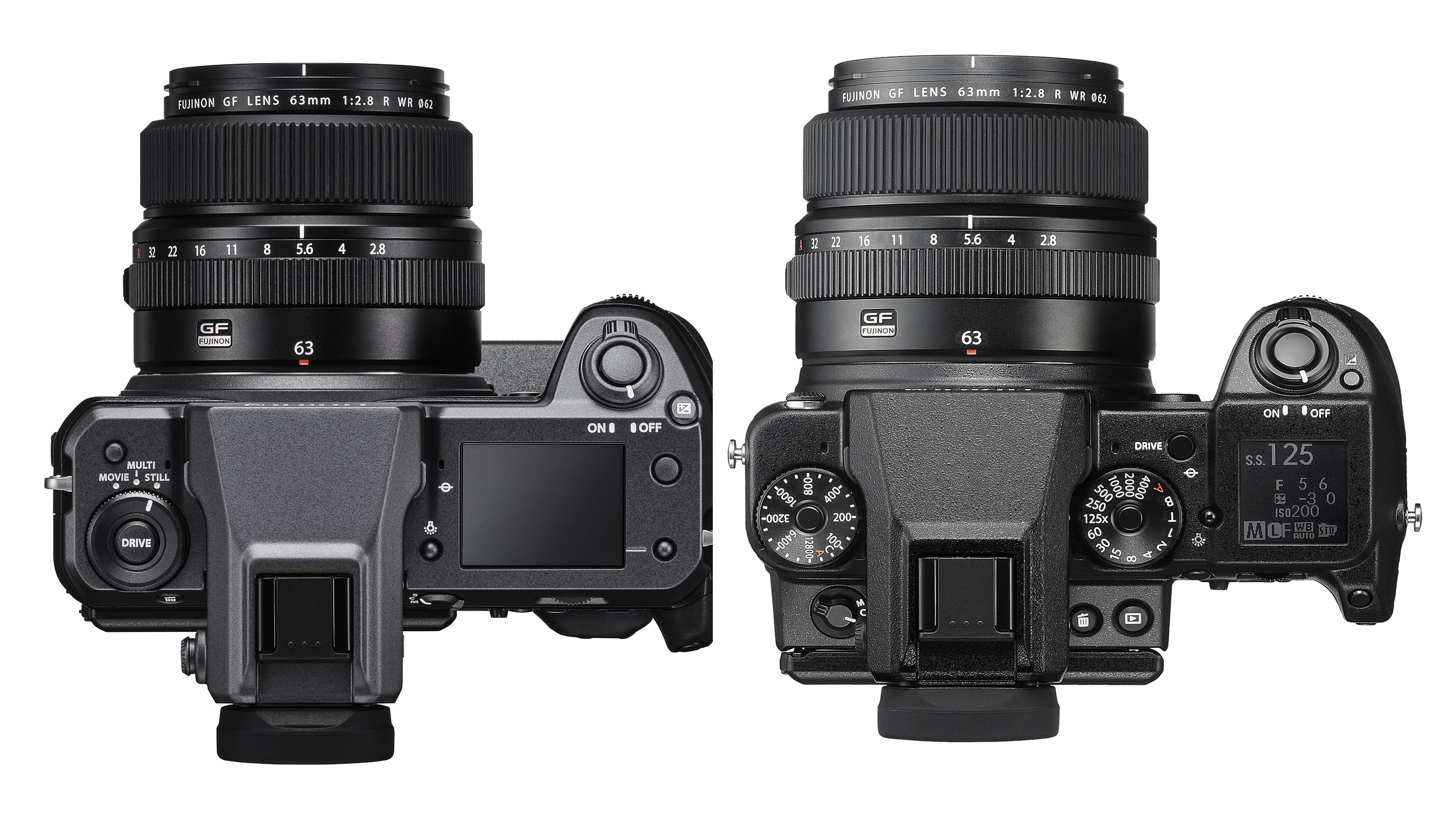
7) Fujifilm GFX 100 vs GFX 50s: control dials
GFX 100: none
GFX 50S: separate dials for ISO and shutter speed
For those who love the retro charm of the Fujifilm X-series cameras, this will undoubtedly be the most controversial thing about the GFX 100 design. The mechanical dials for the ISO and shutter speed have disappeared.
For users who prefer dial based operations, the GFX100 does offer a “Virtual Dial Mode,” which displays the image of a dial on the top panel sub LCD monitor that can be rotated and adjusted with the front and back Command Dials.
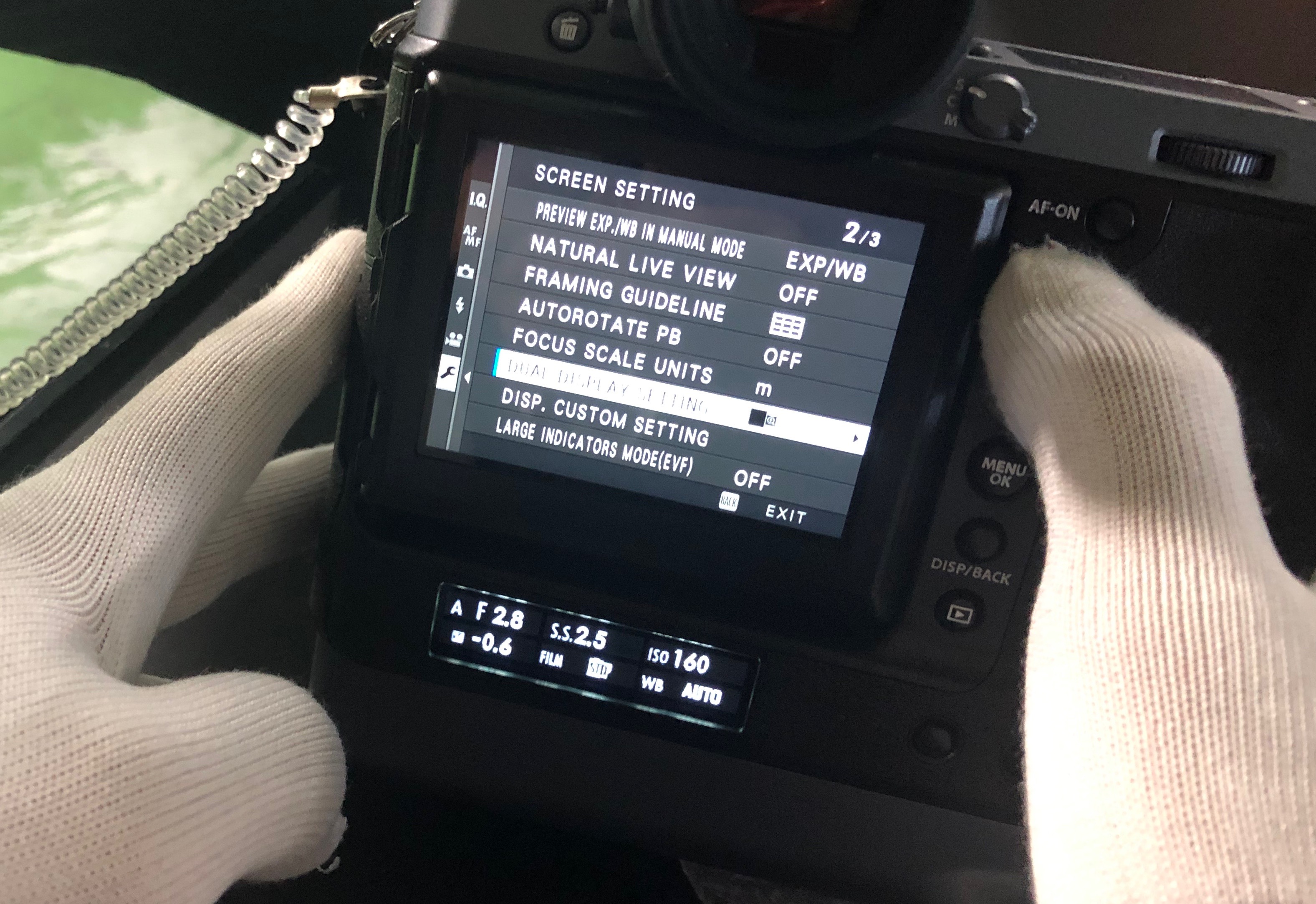
8) Fujifilm GFX 100 vs GFX 50s: information panels
GFX 100: Two (1.8in 303×230-dot panel on top plate, 2.05in 256×64-dot panel on back)
GFX 50S: One (1.28in 128×128-dot panel on top plate)
In addition to the Electronic viewfinder, and the rear LCD screen, the GFX 50S also provides a status readout on a monochrome display panel on the top plate of the camera – so you can immediately see your settings. On the GFX 100 this panel is significantly larger, and you get a second long, thin information panel on the back of the camera beneath the LCD.
9) Fujifilm GFX 100 vs GFX 50s: size and weight
GFX 100: 1400g (with EVF, battery and memory card)
GFX 50S: 920g (with EVF, battery and memory card)
GFX 50S with vertical grip: 1350g (with EVF, battery and memory card)
The GFX 100 is noticeably larger than the GFX 50S – but a lot of this size discrepancy is explained by the fact that the vertical grip (VG-GFX1) for the GFX 50S is an optional bolt-on accessory, whilst this is built-in and permanently fixed to the GFX 100. The weight of the grip and the additional battery for the GFX adds up to 430g.
Without the battery grip the vital statistics (including EVF) of the GFX 50S are 147.5mm x 113.8 x 91.4mm, whilst the GFX 100 measures 156.2 × 163 × 102.9mm.
If size is a real issue, of course, there is the baby of the family the 50-megapixel GFX 50R to consider.
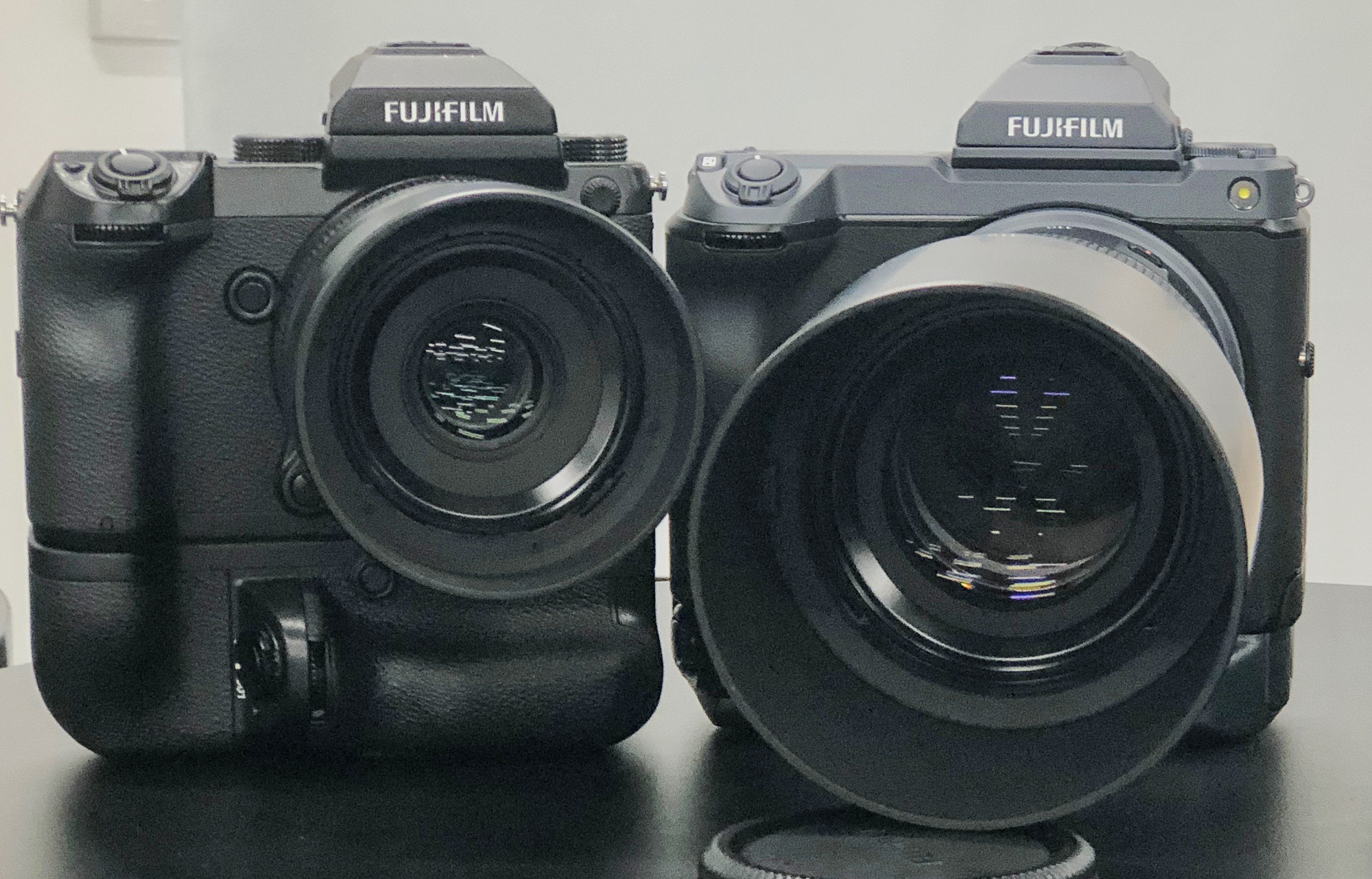
10) Fujifilm GFX 100 vs GFX 50s: battery life
GFX 100: 800 frames
GFX 50S: 400 frames
The GFX 100 wins out here, simply because of the use of two batteries instead of the one. If you use the vertical grip with the GFX 50S, the performance here is the same.
The GFX 100 can be powered and charged through the USB-C connection. Connecting an external battery that supports USB power delivery enables even longer continuous shooting and simultaneous charging of the two batteries in the camera whilst on location.
11) Fujifilm GFX 100 vs GFX 50s: price
GFX 100: £9,999 / $9,999
GFX 50S: £4,999 / $5,499
The GFX 100 is getting on for twice the price of the 50S, and there is little we can do to soften that financial blow. Although perhaps that you might want to take into account that the optional grip for the 50S will set you back a further $599 / £579 (plus a further $119/£119 for the second NP-T125 battery) - which closes the gap a tad.
But mind you are getting a lot more camera for your money - not just in terms of pixels and size, but also through a vastly improved feature set.
Read more:
Get the Digital Camera World Newsletter
The best camera deals, reviews, product advice, and unmissable photography news, direct to your inbox!
Chris George has worked on Digital Camera World since its launch in 2017. He has been writing about photography, mobile phones, video making and technology for over 30 years – and has edited numerous magazines including PhotoPlus, N-Photo, Digital Camera, Video Camera, and Professional Photography.
His first serious camera was the iconic Olympus OM10, with which he won the title of Young Photographer of the Year - long before the advent of autofocus and memory cards. Today he uses a Nikon D800, a Fujifilm X-T1, a Sony A7, and his iPhone 15 Pro Max.
He has written about technology for countless publications and websites including The Sunday Times Magazine, The Daily Telegraph, Dorling Kindersley, What Cellphone, T3 and Techradar.
